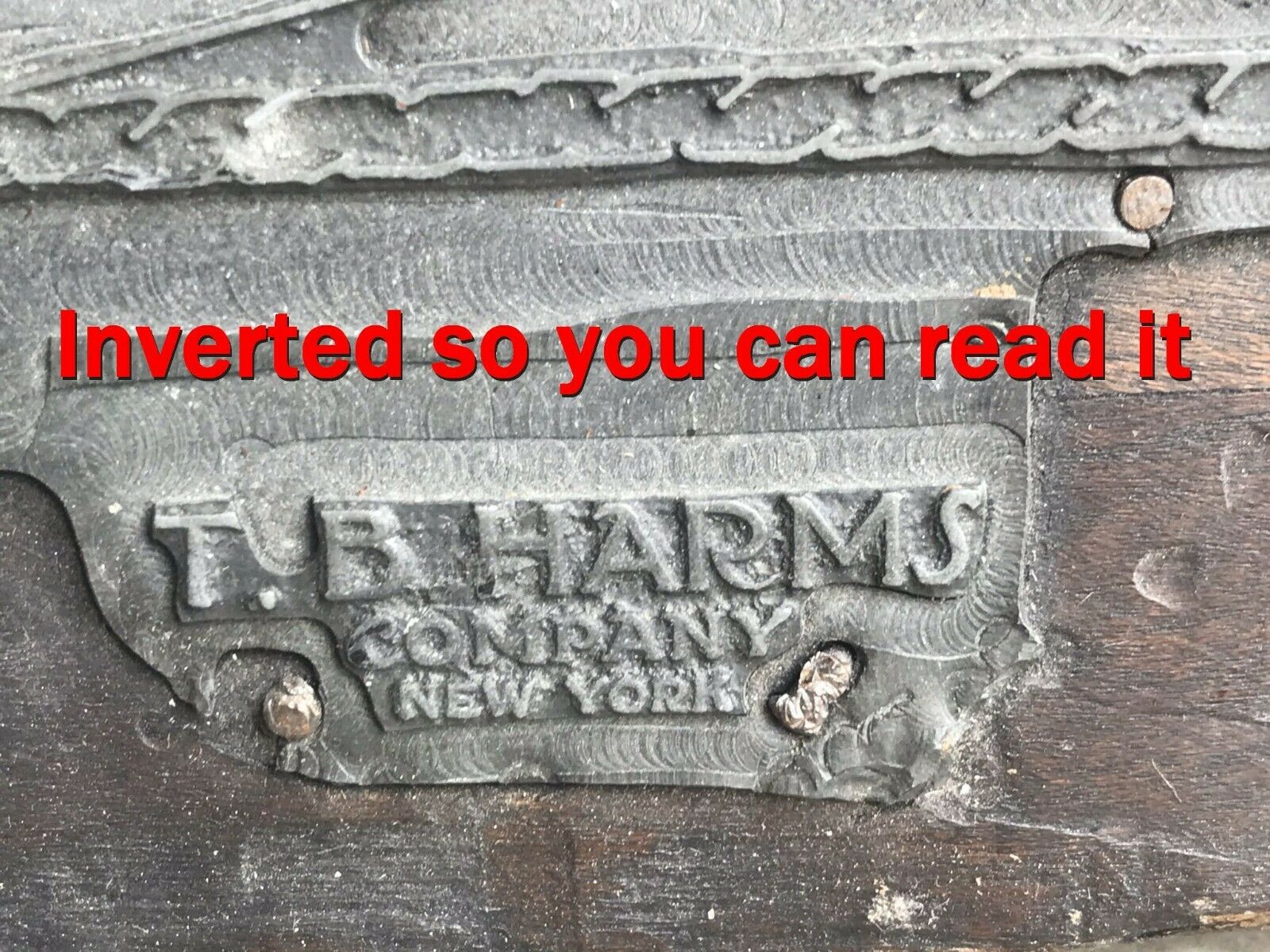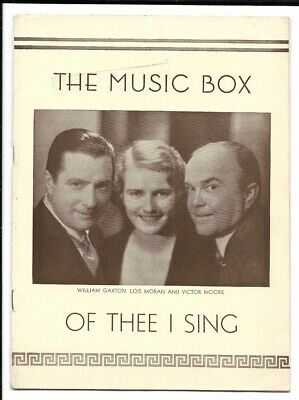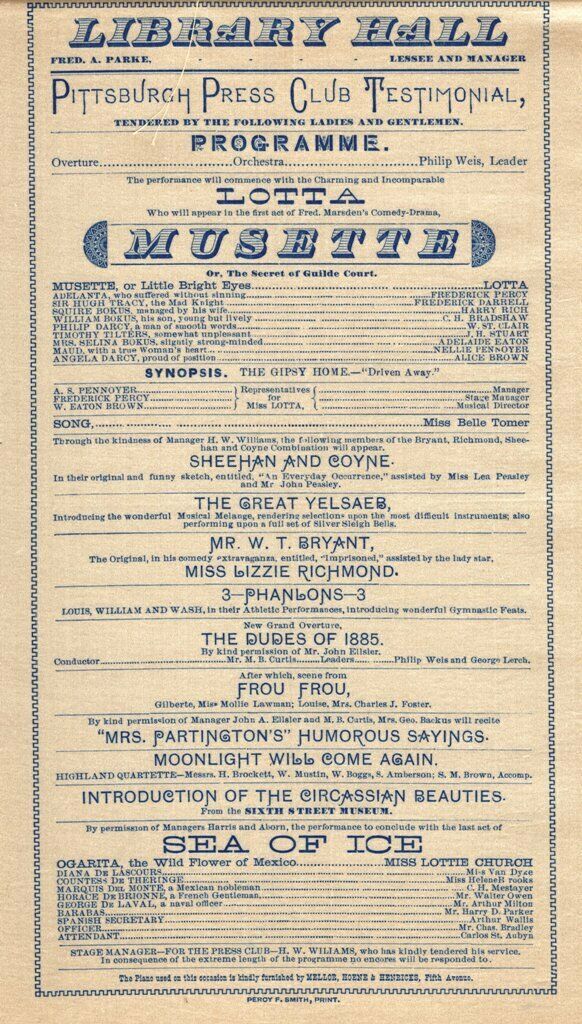-40%
1927 TB Harms Playbill Print Block SHOWBOAT - Post Million $ Counterfeit Arrest
$ 264
- Description
- Size Guide
Description
Do the research. It's all part of history. TB Harms published the play and it was being performed on stage before the film.Show Boat
is a 1929 American
romantic drama film
based on the 1926 novel
Show Boat
by
Edna Ferber
. The film initially did not use the
1927 stage musical of the same name
as a source, but scenes were later added into the film incorporating two of the songs from the musical as well as other songs. This version was released by
Universal
in two editions, one a
silent film
for movie theatres still not equipped for sound, and one a
part-talkie
with a
sound
prologue.
Provenance:
In February of 1975 an individual of record with the United States Secret Service was arrested with his father eating their lunch on top of a stack of freshly printed ten and twenty dollar bills. (See Bergen Record Archives).
The money was so well printed that the silk threads in the specially made paper looked real. All they needed was to be individually numbered with an intaglio press and they might have been accepted at banks and even put back in circulation.
Unbeknownst to the owner of "Capital Printing" (ironically the name of the printing operation) now the renter of what used to be a grocery store. The store was closed due to a series of tragic events, and the property owner needed to rent the space. This brings us to the tenant and former printing instructor at Bergen Technical High School, and his sudden acquisition of a new house, a boat and a vacation property. All this while failing at time to pay the measly 75 dollars per month rent for the space. Why? To look good on the books. Karma was about to foil his plans. The printer's younger brother in law, and his older cousin were coincidentally embarking on a prank to print five dollar bills with the portrait of Frank Zappa on them after hours. They had the keys. The idea was quite innocent. The prank by the 19 and 20 year olds, was to spoof people by throwing the goofy bills into the air a busy shopping centers. But it was the aluminum plates of the badly printed cartoon bills found by sanitation workers outside the shop that got the attention of the Feds.
After a legal battle, the print shop owner sub-leased 1/2 of the building to a rubber stamp maker who moved in cabinets of old print blocks and archaic type set equipment from his father who operated a family New York printing, type set service. This was among the finds by the son of the owner of the building when the printers and bad tenants moved out in a pile left on the curb of broken cabinets and printer's blocks strewn over the sidewalk when the left the place... a mess.
Folks.. you just can't make this stuff up...
In August 1924, Edna Ferber watched as the opening performance of her play
Minick
(co-written with
George S. Kaufman
) was disrupted by an invasion of bats that had been nesting undetected in the chandeliers and dome of the playhouse. Alarmed theatergoers scurried for the exits. As the crew recovered from this debacle,
Winthrop Ames
, the show's producer, jokingly remarked: "Next time... we won't bother with tryouts. We'll all charter a show boat and we'll just drift down the rivers, playing the towns as we come to them."
[1]
Show boats
were floating theaters that traveled along rivers of the United States from the 1870s to the 1930s. The performers lived aboard the vessels. With song, dance, and dramatic productions, show boats provided entertainment for small riverside towns that were otherwise quite isolated. Ferber, who had never heard of show boats, was immediately intrigued:
"Here, I thought, was one of the most melodramatic and gorgeous bits of Americana that had ever come my way. It was not only the theater — it was the theater plus the glamour of the wandering drifting life, the drama of the river towns, the mystery and terror of the Mississippi itself... I spent a year hunting down every available scrap of show-boat material; reading, interviewing, taking notes and making outlines."
[1]
In 1925, Ferber traveled to
Bath, North Carolina
, and spent four days aboard one of the few remaining show boats in the country, the
James Adams Floating Theatre
, which plied the
Pamlico River
and
Great Dismal Swamp
Canal. An account of Ferber's visit to Bath is posted at NCHistoricSites.org.
[2]
The material she gathered, especially the reminiscences of Charles Hunter, the director and chief actor, provided her with "a treasure-trove of show-boat material, human, touching, true."
[1]
Ferber spent the next year in France and New York writing the novel, and published it in the summer of 1926.
The mix of romance, realistic depiction of racial issues, and nostalgia for a vanishing American past was an immediate hit with the public, and the novel was number one on the bestseller lists for twelve weeks. The critical reception was more cautious but still positive. In his
New York Times
review, Louis Kronenberger wrote:
"With
Show Boat
, Miss Ferber establishes herself not as one of those who are inaugurating first-rate literature, but as one of those who are reviving first-rate story-telling. This is little else but an irresistible story; but that, surely, is enough."
[3]
By the time the James Adams Floating Theatre was destroyed by fire in 1941, the era of show boats had ended, supplanted by the
motion pictures
theater.
[4]

















